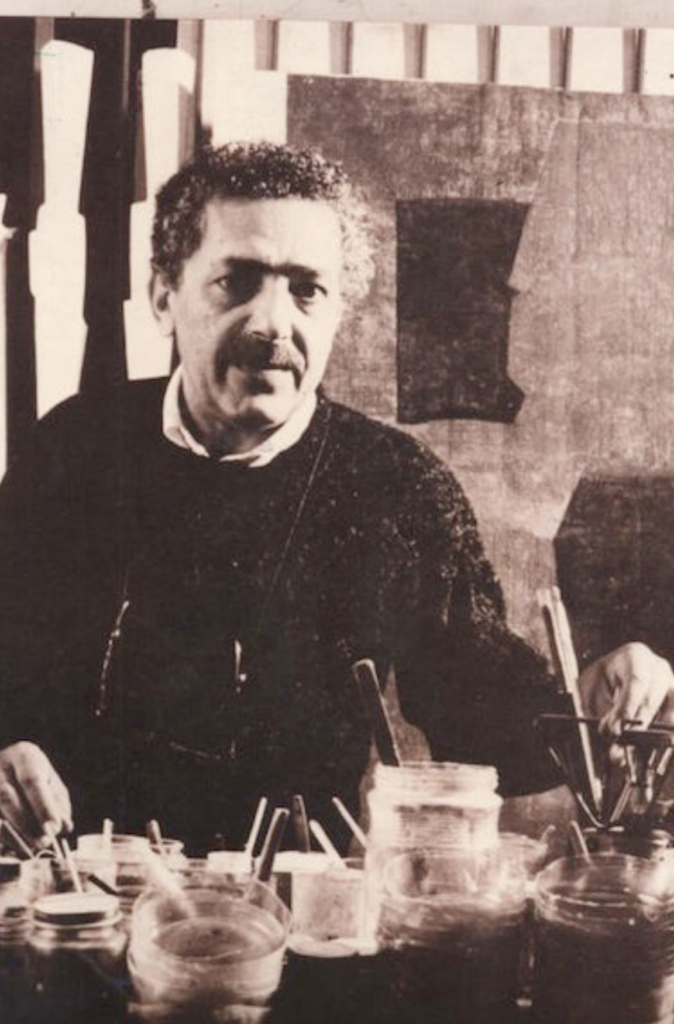Egyptian, 1929-2020

Adam Henein was born in a conservative Egyptian family, an ancient working-class neighborhood amongst a world of craft workshops including goldsmith and silversmith – the father’s and brothers’ job – and raised in the era of cosmopolitan Egypt when different nationalities, ideologies and religions coexisted in a vibrant atmosphere of cultural and humanitarian communication. So from the beginning he conserved the values of his family and home country, yet open to several cultures. And through this upbringing his character as an Artist and a Human was shaped, his river of creativity combined his observations of the ancient Egyptian art, its humanitarian spiritual hidden dimensions, the implied symbolism, the features of glory and edifice, the soft transitions between the levels of the sculpture that’s charged with energy even with its apparent stillness and the freedom of combining three dimensional sculpture blocks and relief sculpture. Adam discovered the social, environmental, economical and spiritual effects in the wise legacy of ancient Egyptian art. Fate led him to meet these sources in its present existence through staying in the Western Mainland of Luxor, Nubia and Philae in the heart of the Nile. And in his house and studio in Harraniya, amidst the fields, he observed genius sunrises and sunsets with the Giza Pyramids in the horizon. Then he had the chance to meet with the western modern arts, Munich Academy of Arts in the late 50s, and by the beginning of the 70s in Paris where he lived and worked for quarter a century. His cultural roots and artistic character interacted with the spectrums of Western modernity. He adhered to his mature experience in his homeland while consciously and wisely opening up to the fundamental ideas that summarize the arts of contemporary modernity. He had the tendency of experimentation in materials and stylistically formulations, and the freedom to move between the representational and the conceptual, breaking the temporal boundaries of art. His rejection of any specific stylistic template was crystallized in his personality, as he believed that “the artist who finds his style dies as an artist.” His sculpture and painting witnessed successive transformations from realism to reduction to what approaches abstraction or crosses it. He painted with colored natural oxides dissolved in Acacia Gum on Papyrus paper to carve a special path in the Egyptian and Arab contemporary painting, in which he combines heritage roots with his contemporary character. Adam Henein’s art is a genetic imprint of his personality, heritage, and extensive knowledge of the creativity of the era, thus his personality reflects that sophisticated, liberal and conservative mixture at the same time. To become a milestone in the arts of sculpture and painting in Egypt. Adam Henein has contributed to great national and international projects since his return to Egypt. As he supervised the proper restoration of the Great Sphinx, then established the Aswan International Sculpture Symposium for sculpting on Granite, and The Open Museum for international sculpture, on a hill overlooking the Nile and the fields of Aswan.
Source: https://www.adamheneinmuseum.com